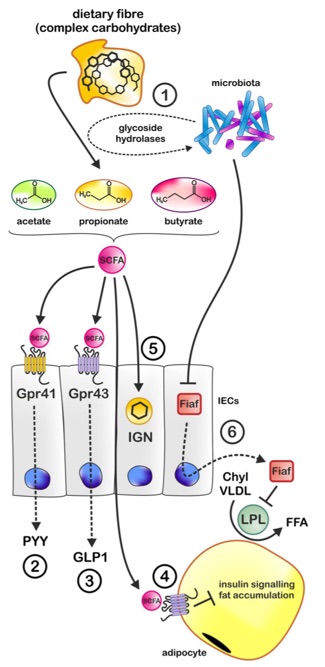Gut Microbes Diet and Exercise
After the genome project, medical and nutrition professionals thought there wasn’t much else to learn about the human body. We had it figured out, or so they thought. Then, along came the Human Microbiome Project (HMP), the NIH-funded study that is currently cataloguing the “forgotten” organ, the microbiome—those 100 trillion bacteria that call our body home.

These bugs colonize every orifice and cavity in our bodies—from nose to ears, mouth to anus.
As you can imagine, this discovery has thrown a big monkey wrench into the way medical and nutrition professionals view the body, the treatment of disease, and health optimization.
Gut Bacteria Are Influenced by Nutrients, Exercise, and Toxins
It was once thought that foods, stressors, exercises, and environmental toxins impacted the bricks and mortar, or tangible structures, of the body. Carbohydrates raise blood sugar and cause the pancreas to release insulin, so the thinking went. Not so fast…
Virtually every aspect of our environment impacts the forgotten organ, our gut microbiome. The way you were born (Cesarean versus vaginal delivery), if you were breast fed versus formula fed, if you were exposed to antibiotics during the first six months of your life, what digestive medications you’ve taken—all impact the composition, and thus metabolic activity, of your gut bacteria.
Gut Microbiome Composition Influences Energy Harvesting from Food
One way our gut bacteria have helped us over the years is through enhancing the energy harvest from out diet. Microbiologists recently demonstrated that overweight people actually absorb more calories from the foods they eat (Turnbaugh et al).
Correspondingly, they found that the composition of one’s diet directs which type of gut bacteria will flourish. The relationship between intake and proliferation is a two-way street—bidirectional as some call it.
In general, a diet rich in colored-polyphenols and fibers fosters the growth of a highly diverse and healthy microbiome. Conversely, a diet rich in processed foods, devoid of color, leads to reduced gut microbiome richness, which is linked to obesity, diabetes, and chronic diseases.
Regular exercise and a high-protein diet is allied with increased bacterial diversity, higher levels of healthy bacteria (Akkermansia muciniphila), and lowered inflammation and body fat percentage in athletes compared to non-athletes. (Read more here)
How Exercise Impacts Intestinal Health and Gut Bacteria
Regular physical exercise impacts many aspects of our health—from our DNA and genes to our GI tracts. It has been known for quite some time that exercise increases gut transit time. Within reason, the shorter the transit time, the better. Longer transit time simply increases the duration of the effect that bacteria have on intestinal nutrients; and since our gut microbes ferment our food and create secondary by-products, such as hydrogen sulfide and volatile organic acids (which can damage the intestinal tract), ideally one’s transit time should be 18 to 24 hours.
A recent animal model study showed that exercising rats had higher levels of anti-inflammatory short-chain fatty acid (SCFA) butyrate and lower levels of the inflammatory cytokine TNF-alpha.
Conclusion
We can no longer ignore the microbiome and its role in our health, metabolism, and body composition. Supercharge your gut bacteria by eating a diet rich in color, fiber, and protein. Regular physical activity improves both gut transit time and composition of gut bacteria.
References
Hold, G. L. (2014). The gut microbiota, dietary extremes and exercise. Gut 2014, 63(12), 1838–1839. doi:10.1136/gutjnl-2014-307305
Oettlé, G. J. (1991). Effect of moderate exercise on bowel habit. Gut 1991, 32(8), 941–944. doi:10.1136/gut.32.8.941
Turnbaugh, P.J., Ley, R.E., Mahowald, M.A., et al. An obesity-associated gut microbiome with increased capacity for energy harvest. Nature 2006, 444, 1027-31. doi:10.1038/nature05414

1 comment